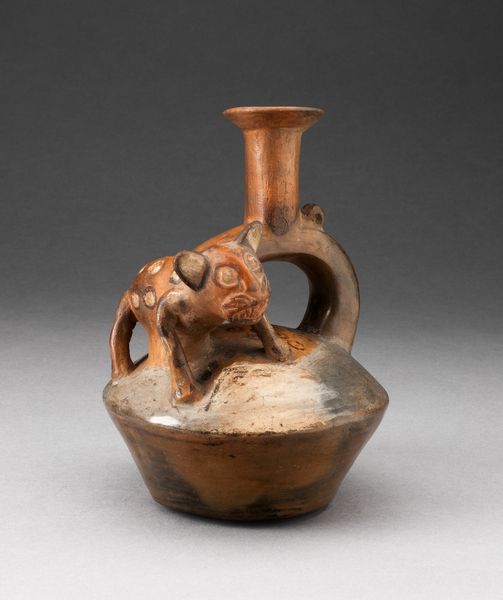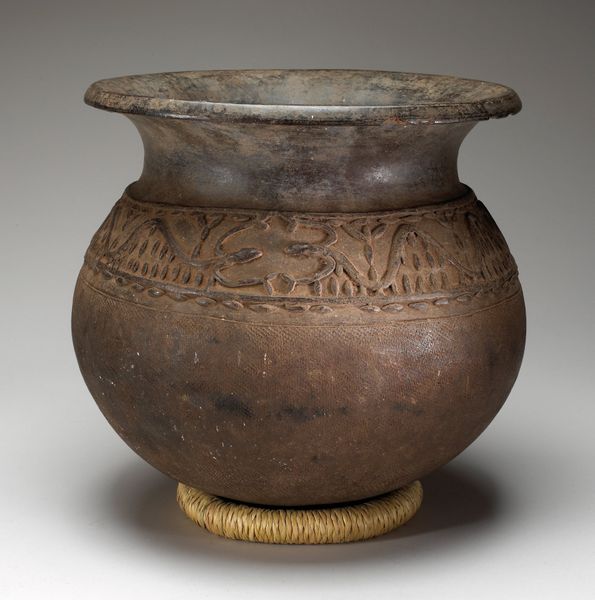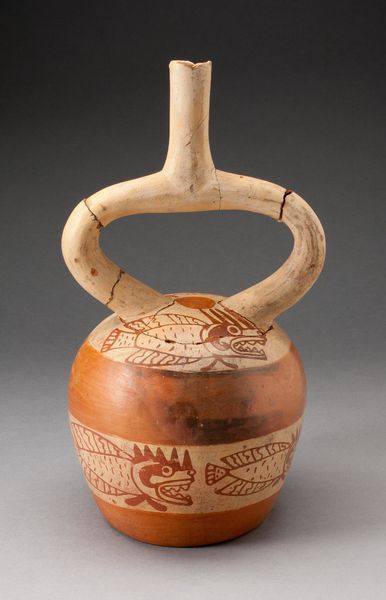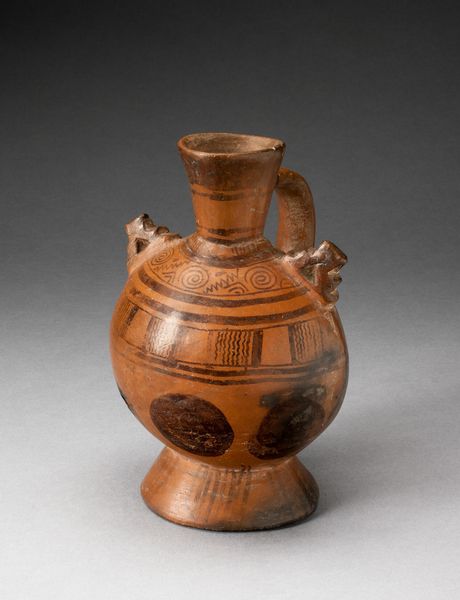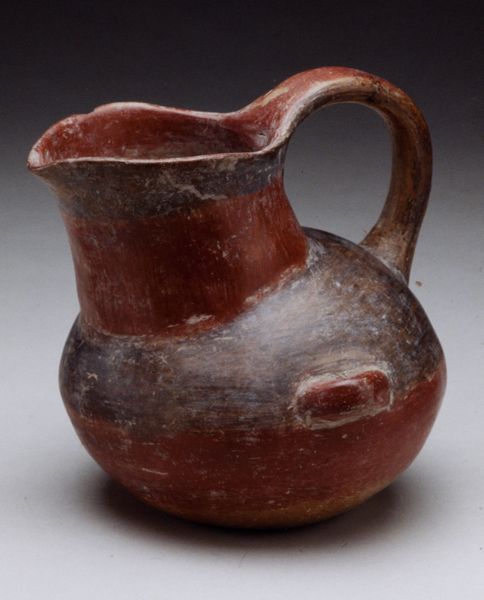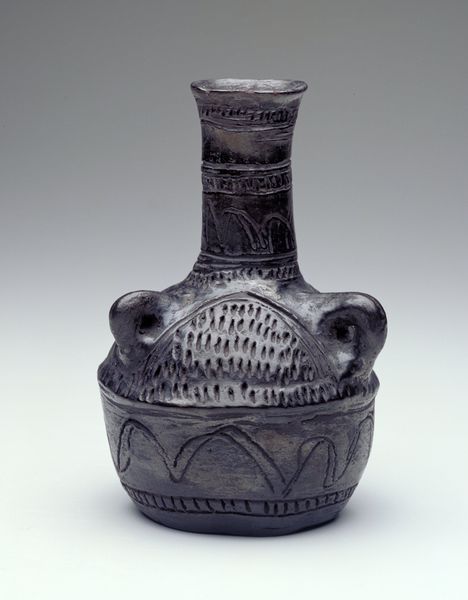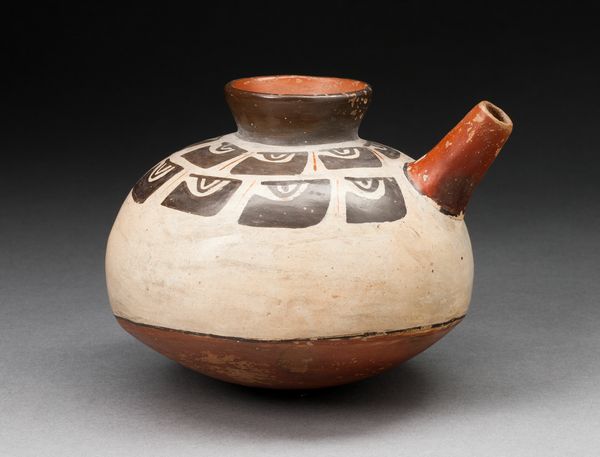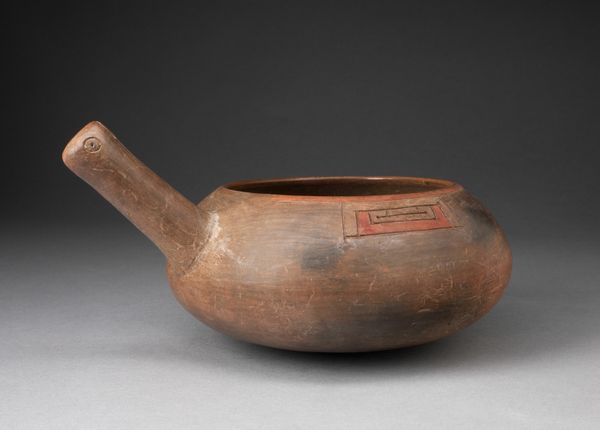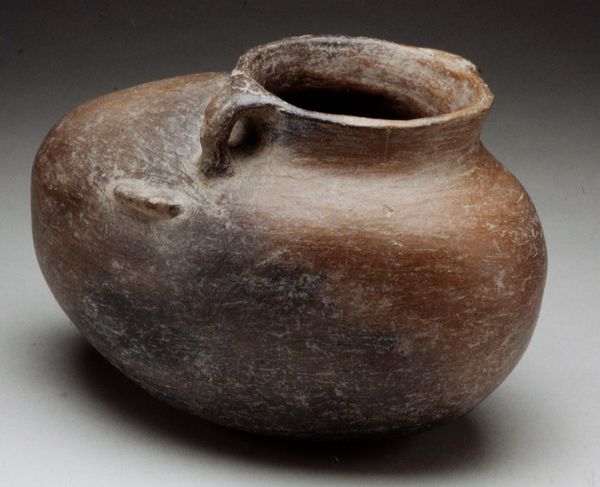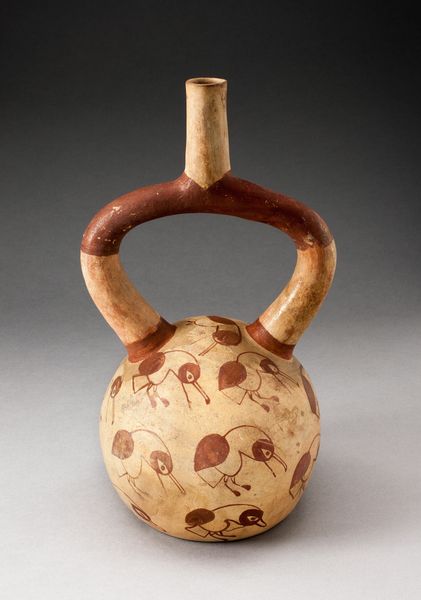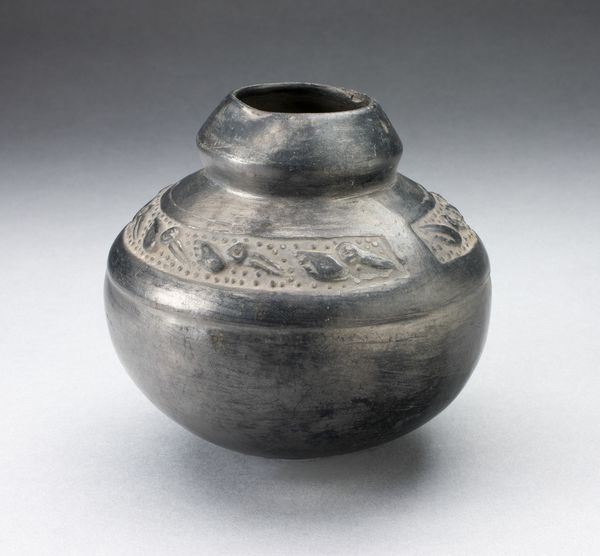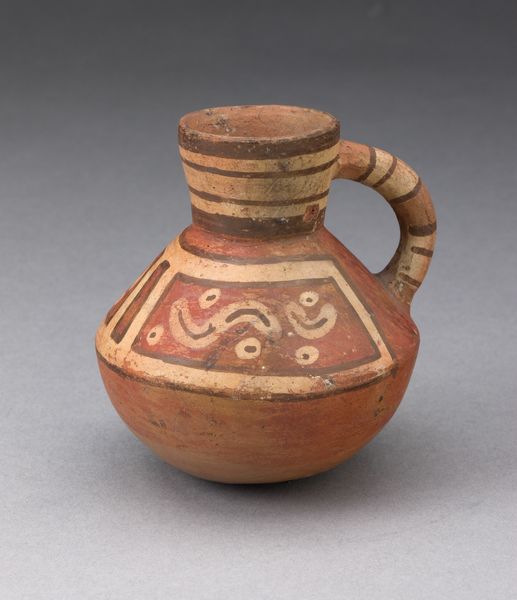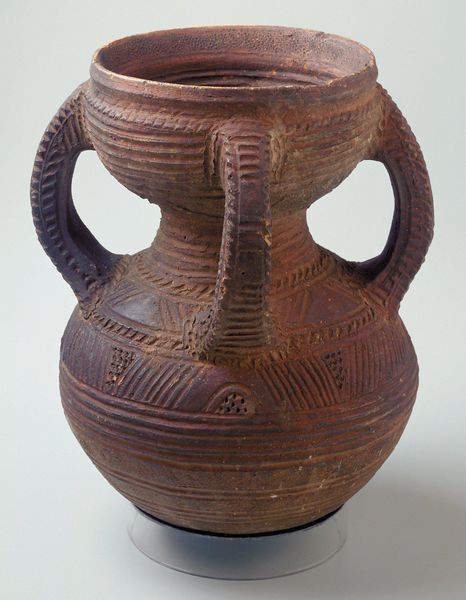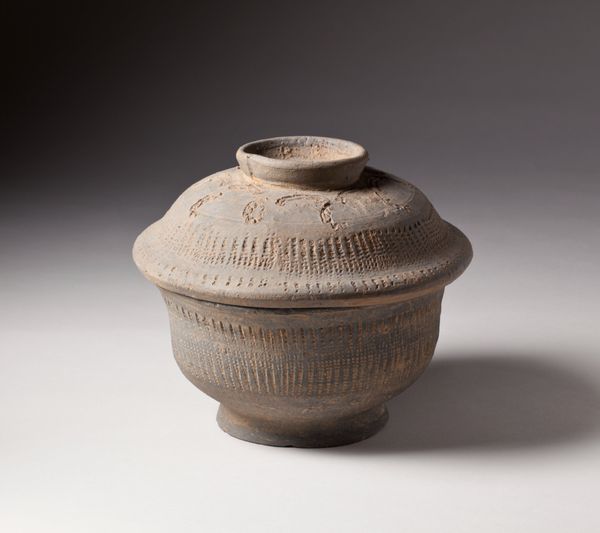
ceramic, earthenware, terracotta
#
sculpture
#
ceramic
#
earthenware
#
terracotta
#
indigenous-americas
Dimensions: 4 3/4 x 4 1/4 x 9 3/4 in. (12.1 x 10.8 x 24.8 cm)
Copyright: Public Domain
Editor: Here we have a ceramic censer by the Mixtec people. It's difficult to nail down a precise date for its creation. I am struck by its fragility despite being made of such durable material as earthenware. What can you tell us about this object? Curator: This Mixtec censer offers us a fascinating glimpse into ritual practices. The perforations surrounding the bowl weren't just decorative; they served a critical function in oxygenating the burning incense, a potent symbol in many Mesoamerican cultures. Does the loop on the handle spark any ideas for you? Editor: It seems like a way to hold or carry the censer while preventing the carrier from being burned. Curator: Exactly! Consider that this wasn't merely functional; the act of carrying incense itself held symbolic weight. Incense smoke was often interpreted as a conduit to the divine, a way to petition the gods. Notice the elevated bowl on three feet. What do you make of that? Editor: Well, it elevates the incense so the smoke can permeate from a higher vantage. Is there a reason it's earthenware rather than another material? Curator: Earthenware was readily available and easily molded, but its porous nature also connects it to the earth, making it an apt material for connecting with deities tied to fertility and agriculture. These kinds of objects weren't just beautiful; they were essential components in a complex spiritual system. Editor: It’s fascinating to consider how this object acted as a vessel, physically and spiritually. Curator: Precisely. By considering its symbolic weight and function, we begin to see that objects carry and reinforce a society’s collective beliefs.
Comments
No comments
Be the first to comment and join the conversation on the ultimate creative platform.
